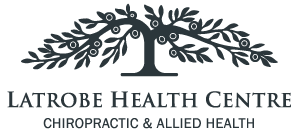Does it matter where your chiropractor cracks your back? To be fair, its probably not something you think about a lot, but as chiropractors we spend a lot of time training to locate the specific areas of your spine causing you trouble.
Another interesting study has recently been published looking at whether it matters which part of your spine gets manipulated or adjusted in order to relieve pain in your low back. Sounds strange doesn’t it? Common sense would suggest that if you have low back pain, then the best place to target the spinal adjustments would be to the low back. But this may not be the case, and here’s why. We know that spinal manipulation or adjustments works fairly well at reducing pain and increasing mobility in people with back problems. What we are still trying to work out is the ‘How’. In this study, researchers took a group of people who had chronic low back pain and divided them into 2 groups.
One group received manipulations to the lower back (where the pain was) and the other received manipulation to a non-painful area around the shoulder blades. When the researchers measured their pain levels immediately after the manipulation, both groups experienced some pain relief. It has been thought for some time that spinal adjustments allow the vertebral bones to move in a greater range of motion and help reduce the stress on spinal muscles, thus reducing pain and discomfort. However more recent research suggests that spinal manipulation may also have some quite significant pain relieving influence in certain areas of the brain. There are parts of the brain that are involved in relieving pain throughout the body (the technical term is “endogenous pain pathways”). And it appears there are various ways of stimulating these areas in order to provide some ‘natural’ pain relief.
Exercise is one way, which is why advice for arthritis and low back pain sufferers often involves remaining active. Exercise stimulates the production of chemicals from the brain that help to relieve pain. Well, it appears that spinal adjustments may too… regardless of where we adjust the spine. Now before you ask us to get all ‘crack happy’ on your spine, or before you decide it’s a good idea to get your partner to walk up and down your spine, just pause for a minute. Firstly, this study only measured the pain relieving effects of spinal manipulation immediately after the treatment was performed. It did not measure how well the patients fared after 1 day, week, month or year after treatment. Time will tell, but intuitively, you would think that targeting treatment to the area of dysfunction or pain would be a better approach long term than applying the treatment at a remote site that may or may not have a problem with it.
Secondly, an approach that serves to assess and treat the entire spine will probably achieve a similar outcome. This is one reason why chiropractors will assess your whole spine to ensure good function, rather than solely focus on the area of pain. And finally, spinal manipulation is not without risk. As chiropractors an important part of our job is to perform spinal manipulation in the safest possible manner, using the most appropriate amount of force and using the right techniques for each individual. An equally important task is knowing when NOT to manipulate and choosing a different methods of improving the function of the spine, muscles and nerves. So if you hear anyone saying that it doesn’t matter where you get your ‘back cracked’, that you don’t need to be specific about it, or that anyone can do it, I would be cautious.






